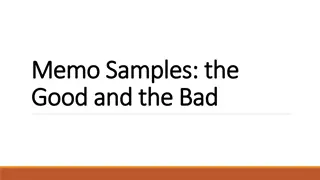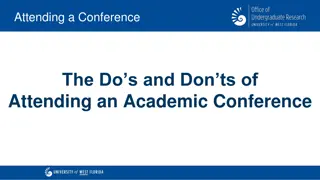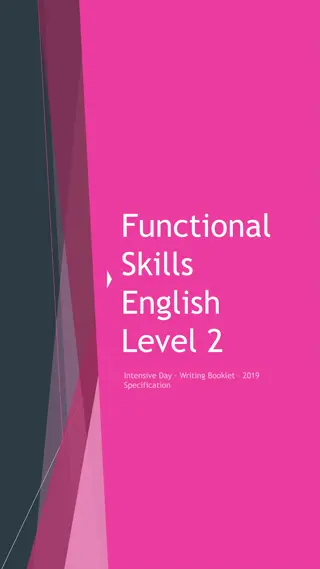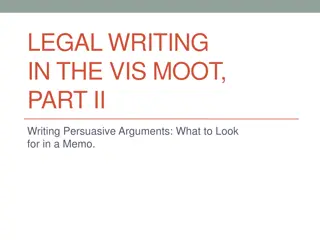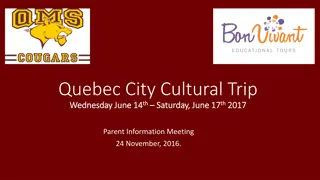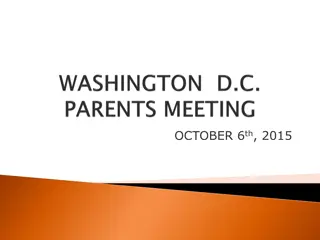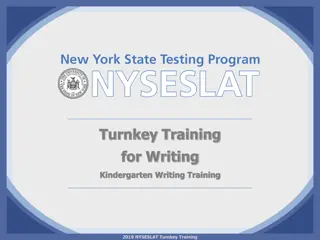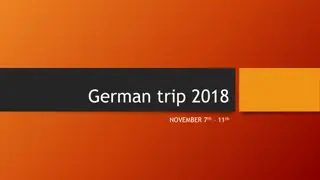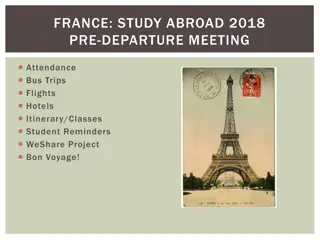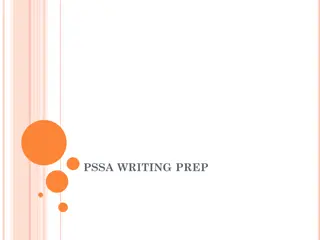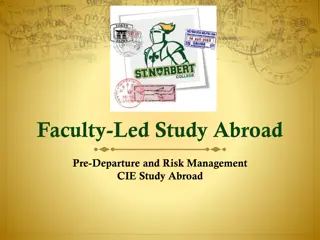Mastering Itinerary Writing and Memo Structure
Delve into the art of crafting professional itineraries and memos to enhance communication in the workplace. Learn the nuances of itinerary preparation, memo writing styles and structures, along with practical tips for effective business communication.
Download Presentation

Please find below an Image/Link to download the presentation.
The content on the website is provided AS IS for your information and personal use only. It may not be sold, licensed, or shared on other websites without obtaining consent from the author. Download presentation by click this link. If you encounter any issues during the download, it is possible that the publisher has removed the file from their server.
E N D
Presentation Transcript
Learning Objectives Understand what an itinerary is and how it is written Understand what a memo is and its style and structure Differentiate between a circular and a memo Learn how to draft the notice, agenda, and minutes of a professional meeting Gather tips on creating attractive business advertisements
Itinerary Writing Itinerary: A plan that lists a professional s engagements for a proposed trip. Professional s engagements on a trip listed on an hourly or daily basis. Helps professionals save time & remain focused. Minimizes risk of missing out on an important engagement. Avoids running into uncalled for aberrations. May list some vital details or clues to conduct a task efficiently.
Tips to Prepare an Itinerary Prefer word processed document & a neatly printed itinerary rather than scribbling casually. Soft copy helps make later alterations and changes. Use layout that suits individual tastes. Assign a particular title to the trip and write the header at the top. Divide the trip into days and hours; chronologically arrange engagements by splitting them on an hourly basis. Avoid mentioning trivial affairs of daily routine. Using clear phraseology while listing items avoids last minute confusions & reflects picture of clarity in mind.
Inter-office Memorandum (MEMO) Though normally a memo connotes a reprimand of some sort. Document written to pass information between people & dept within organization. Provide written record & history of company s decisions. Record of responsibilities assigned to people within organization. Handle flow of information up, across or down in organization.
Within an Organization, Memo used: To confirm To suggest To request To explain To announce To report To caution or warn
Structure of a Memo Letter head (header) of the organization Centralized tag Designations of sender & recipient of memo Date Reference number Subject line Body of the memo Name and designation of the sender, etc.
Style of a Memo Generally informal, even conversational at times and shorn of formalities Don t ramble; memo is generally a short piece of communication. Announce purpose immediately. State the point with clarity. Stick to making one point in a short memo. Call for action- clearly spell out what needs to be done, when, how, and where. Prefer standard format generally used for the purpose.
Circulars Brief piece of professional communication that goes to everyone concerned in an organization. Circulated both within & outside organization. Written to promote a new product, inform policy holders of movements in the insurance field, inform shareholders of market trends, or make matters of general interest known to several persons.
Types of Circular Informative circulars Public circulars Circulars of Partnerships and companies Official circulars
Notice Written information about the day, date, time, and venue of the meeting. Generally, sent few days before the meeting. Minutes of the previous meeting may be attached. Agenda of meeting sent with notice.
Agenda Its a list of the topics to be addressed to get to an objective, with a time limit to keep one on track.
Significance of an Agenda It forces the convener of the meeting to think about what needs to be accomplished. If it is sent ahead of time, the agenda lets participants know what to expect and allows them to prepare as required. It provides a blueprint for the meeting to follow. It helps the concerned members to think of what is left uncovered and this can help in adding those issues with the permission of the chair.
Minutes Written record of committee meeting times, attendance, topics covered, discussion on topics approved. Includes all important decisions taken, methods and motions adopted. Form the basis of future actions and decisions. High accuracy is a must in recording them.
Advertising form of communication intended to persuade an audience (viewers, readers, or listeners) to purchase or take some action upon products, ideas, or services. Purpose Increasing the sales of the product/service Creating and maintaining a brand image Communicating a change in the existing product line Introduction of a new product or service Increasing the market value of the company
Types of Advertising Print advertising Physical/outdoor advertising Surrogate advertising Coffee cup advertising Digital advertising (online & TV) Guerrilla advertising
Tips to Create Attractive Business Ads Use powerful headline, expression, or caption. Include all information, but in concise manner. Design ad as per availability of time/space. Write in a persuasive style. A song or an apt jingle helps listeners relate to the product.








